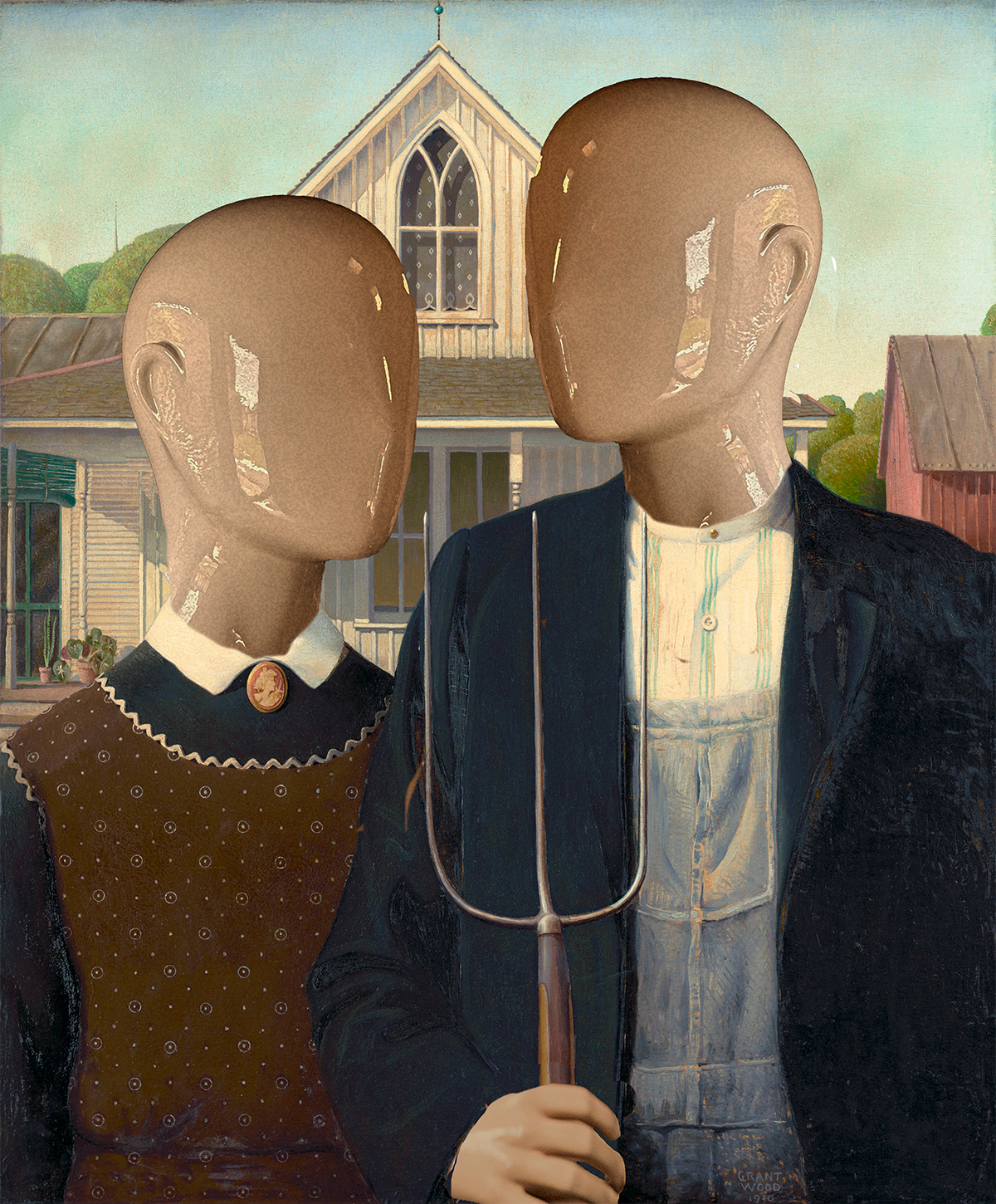Gothic Window reimagines Grant Wood’s American Gothic (1930), replacing the weathered faces of its original subjects with blank mannequin heads. In doing so, the work explores not only surface and substitution, but the hollow promises embedded in cultural ideals.
The scene appears serene, even romantic: two youthful figures face one another, isolated against the backdrop of a Midwestern home, the famous Gothic window behind them. The couple are turned toward each other. But there is no eye contact. No eyes at all. The heads are smooth, anonymous, expressionless ─ perfection as imagined by retail design. If this is a moment of love, it is love as simulation.
Marketing often sells us this tableau: a lifestyle built from stillness, symmetry, and domestic certainty. The piece plays with that ─ echoing window displays, catalogue shoots, or product packaging. It is possible to read this work as the moment before identity: before the weight of time, work, and disappointment has shaped the figures into the hardened faces we see in Wood’s original. In this sense, the work becomes a prequel, a study of ideals before they calcify into lives.
But another reading reverses that logic. Perhaps Gothic Window is not a beginning, but an end ─ a corporate afterlife. A world in which the people have been worn down, emptied out, replaced. The real figures are gone. What remains is a posed memory, repeated infinitely in shopfronts and screen ads.
There is also the gaze. In American Gothic, the couple look forward ─ not at each other, but at us. There is no love in that painting, no romance ─ only confrontation, or endurance. In Gothic Window, the mannequins turn to one another, but cannot see. Perhaps this is the promise of love before its failure. Or perhaps it is a display made for our benefit: a performance of intimacy for an external viewer ─ a lie sold back to us.
This work is part critique, part memorial. It asks: what are we buying into when we adopt these images? And what remains of us when they have been fully absorbed?
